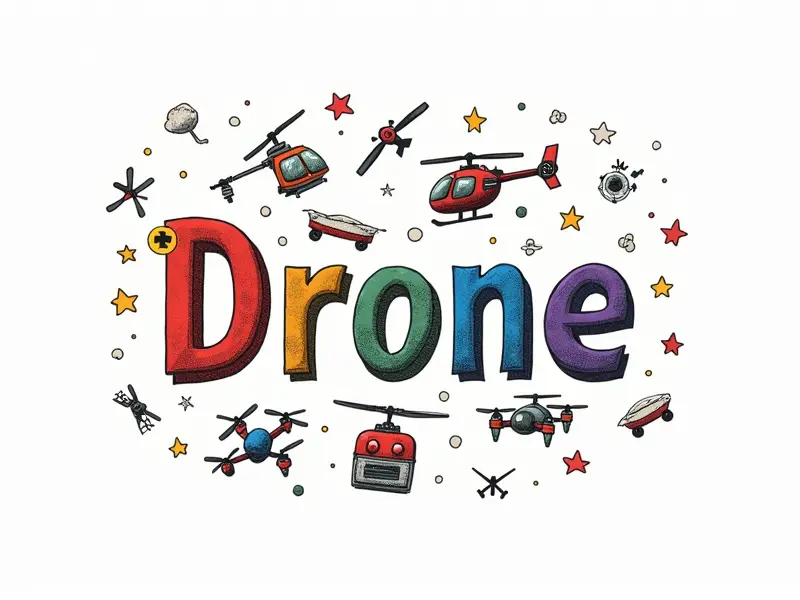Can I fly GePRC drones indoors?

Indoor Flying Guide for GePRC Models
Flying a drone indoors can be an exciting and unique experience, but it comes with its own set of challenges. This guide will help you understand the ins and outs of flying your GePRC drone in indoor environments.
Challenges of Indoor GePRC Drone Flying
- Limited Space: Indoors, space is limited compared to outdoor settings, making maneuvering more challenging.
- Obstacles: Walls, furniture, and other objects can obstruct your drone's path and cause unexpected collisions.
- Lighting Conditions: Indoor lighting may not be as consistent or bright as outdoor environments, affecting the drone’s camera performance.
Tips for First-Time Indoor GePRC Flights
- Start Small: Begin with a small room to get accustomed to your drone's controls and behavior in confined spaces.
- Clear the Area: Remove any obstacles that could interfere with your flight path before starting.
- Practice Hovering: Focus on keeping your drone steady at a single spot before attempting more complex maneuvers.
Optimal Indoor Conditions for GePRC Flyers
To ensure the best performance of your GePRC drone indoors, consider these factors:
- Adequate Lighting: Ensure there is sufficient lighting to maintain visibility and camera quality.
- Cool Temperatures: Avoid flying in excessively hot or cold environments as extreme temperatures can affect battery life and drone performance.
- No Wind: Since indoor conditions are wind-free, your drone will behave predictably without the influence of external factors.
Best Indoor Settings for GePRC Drones
The ideal room for flying a GePRC indoors would be:
- Larger Spaces: Rooms with high ceilings and open areas minimize obstructions.
- Furniture-Free Zones: Areas devoid of furniture or other objects that could impede flight paths.
- Low Humidity: Low humidity levels reduce the risk of electrical issues caused by moisture buildup.
Can GePRC Handle Tight Indoor Environments?
GePRC drones are designed to handle various environments, including tight indoor spaces. However, they require careful handling and understanding of their limitations:
- Narrow Passages: Be cautious when flying through narrow corridors or between objects.
- Corners: Corners can be tricky due to reduced visibility; fly slowly and carefully around them.
Maximizing Flight Time with Indoor GePRC
To extend your drone's flight time indoors, consider the following tips:
- Battery Management: Use high-capacity batteries for longer flights and ensure they are fully charged.
- Energy Efficiency Settings: Adjust your drone’s settings to optimize energy consumption without compromising performance.
Is It Safe to Fly GePRC Inside?
Flying a GePRC indoors can be safe if you follow these safety guidelines:
- Obstacle Awareness: Always keep an eye out for obstacles and plan your flight path accordingly.
- No Pets or Children Nearby: Ensure that pets and children are kept away from the flying area to prevent accidents.
Indoor vs Outdoor: GePRC Drone Differences
Flying a GePRC indoors differs significantly from outdoor flights in several ways:
- No Wind Resistance: Indoor environments lack wind, which can affect flight stability and control.
- Different Power Requirements: Indoors, drones operate at lower power levels due to reduced air resistance.
GePRC Drone Performance in Small Spaces
While GePRC drones excel outdoors, they can also perform well indoors with the right conditions and precautions. Here are some considerations:
- Navigational Precision: Indoor flying requires precise control over your drone’s movements.
- Camera Quality: Ensure that lighting is adequate to maintain high-quality video and photo captures.
Maximizing Your Indoor GePRC Drone Flight
To get the most out of your indoor flying experience with a GePRC drone, follow these best practices:
- Practice Regularly: The more you fly indoors, the better you will understand and control your drone.
- Use Flight Simulators: Before venturing into real-life indoor flights, practice using flight simulators to improve skills.
Conclusion
Flying a GePRC drone indoors can be an enjoyable and rewarding experience if you are prepared for the unique challenges it presents. By understanding the optimal conditions, practicing regularly, and adhering to safety guidelines, you can maximize your indoor flying enjoyment while ensuring your drone’s longevity.

